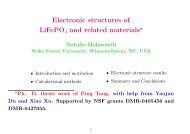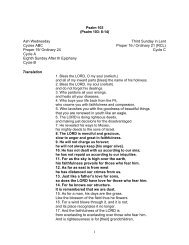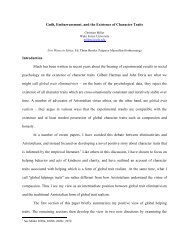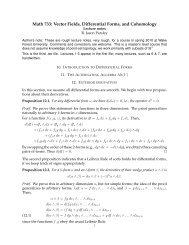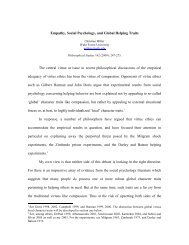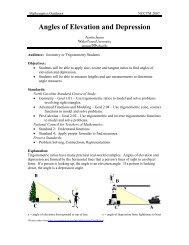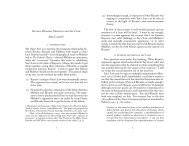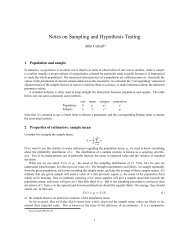Nonnegativity Constraints in Numerical Analysis - CiteSeer
Nonnegativity Constraints in Numerical Analysis - CiteSeer
Nonnegativity Constraints in Numerical Analysis - CiteSeer
Create successful ePaper yourself
Turn your PDF publications into a flip-book with our unique Google optimized e-Paper software.
NNLS Problem:Given a matrix A ∈ R m×n and the set of observed values given by b ∈ R m , f<strong>in</strong>d a nonnegativea vector x ∈ R n to m<strong>in</strong>imize the functional f(x) = 1 2 ‖Ax − b‖2 , i.e.m<strong>in</strong>xf(x) = 1 2 ‖Ax − b‖2 ,subject to x ≥ 0.(6)The gradient of f(x) is ∇f(x) = A T (Ax − b) and the KKT optimality conditions forNNLS problem (6) arex ≥ 0∇f(x) ≥ 0 (7)∇f(x) T x = 0.Some of the iterative methods for solv<strong>in</strong>g (6) are based on the solution of the correspond<strong>in</strong>gl<strong>in</strong>ear complementarity problem (LCP).L<strong>in</strong>ear Complementarity Problem:Given a matrix A ∈ R m×n and the set of observed values be given by b ∈ R m , f<strong>in</strong>d avector x ∈ R n to m<strong>in</strong>imize the functionalλ = ∇f(x) = A T Ax − A T b ≥ 0x ≥ 0λ T x = 0.(8)Problem (8) is essentially the set of KKT optimality conditions (7) for quadratic programm<strong>in</strong>g.The problem reduces to f<strong>in</strong>d<strong>in</strong>g a nonnegative x which satisfies (Ax − b) T Ax = 0.Handl<strong>in</strong>g nonnegative constra<strong>in</strong>ts is computationally nontrivial because we are deal<strong>in</strong>g withexpansive nonl<strong>in</strong>ear equations. An equivalent but sometimes more tractable formulation ofNNLS us<strong>in</strong>g the residual vector variable p = b − Ax is as follows:1m<strong>in</strong>x,p 2 pT ps. t. Ax + p = b, x ≥ 0.The advantage of this formulation is that we have a simple and separable objective functionwith l<strong>in</strong>ear and nonnegtivity constra<strong>in</strong>ts.The NNLS problem is fairly old. The algorithm of Lawson and Hanson [49] seems to bethe first method to solve it. (This algorithm is available as the lsqnonneg <strong>in</strong> Matlab, see[83].) An <strong>in</strong>terest<strong>in</strong>g th<strong>in</strong>g about NNLS is that it is solved iteratively, but as Lawson andHanson show, the iteration always converges and term<strong>in</strong>ates. There is no cutoff <strong>in</strong> iterationrequired. Sometimes it might run too long, and have to be term<strong>in</strong>ated, but the solutionwill still be “fairly good”, s<strong>in</strong>ce the solution improves smoothly with iteration. Noise, asexpected, <strong>in</strong>creases the number of iterations required to reach the solution.(9)5



